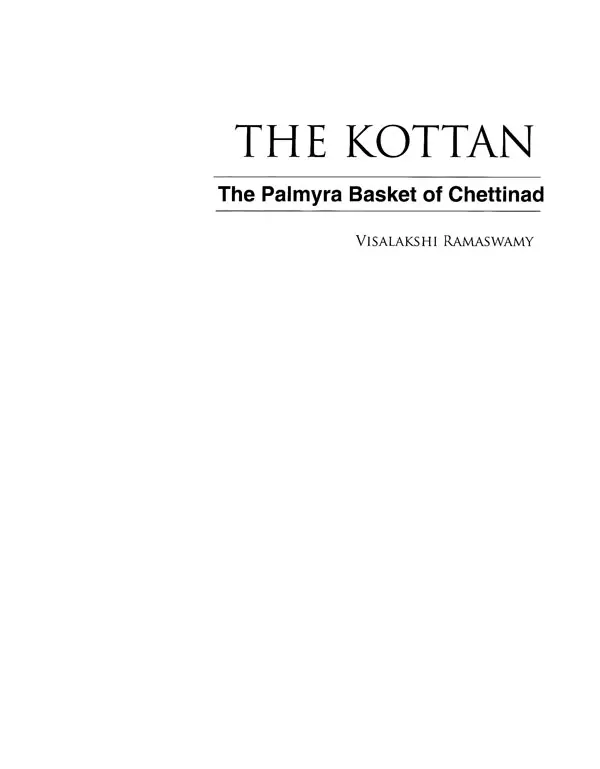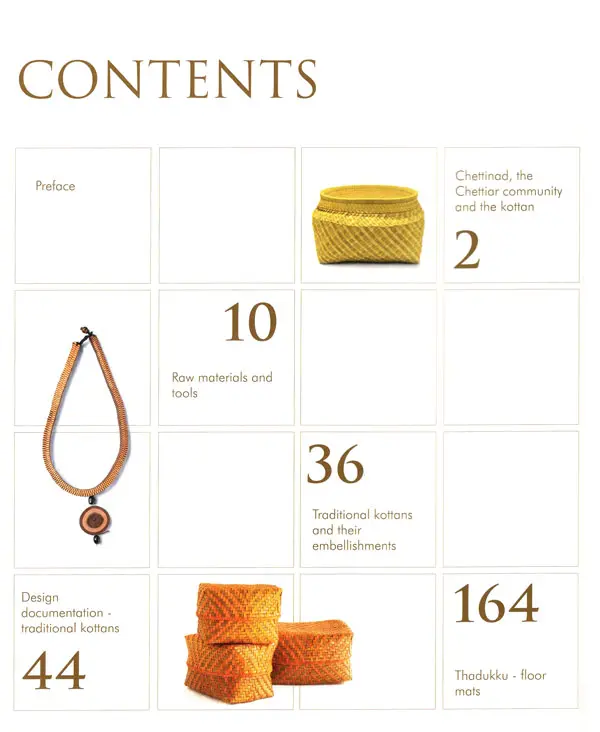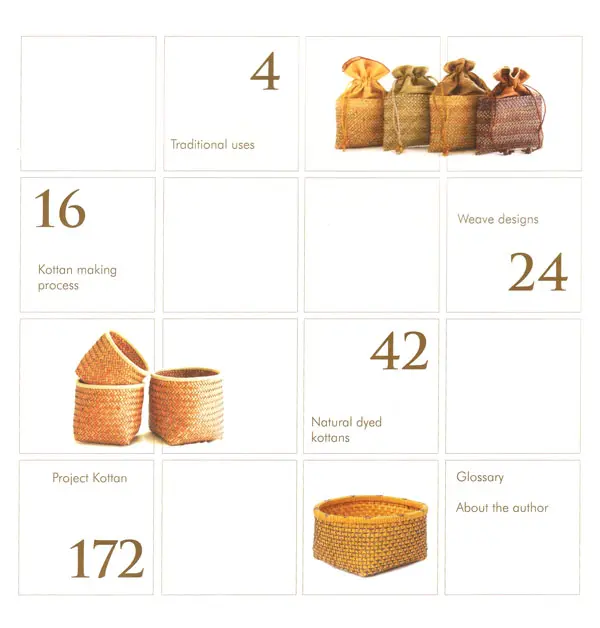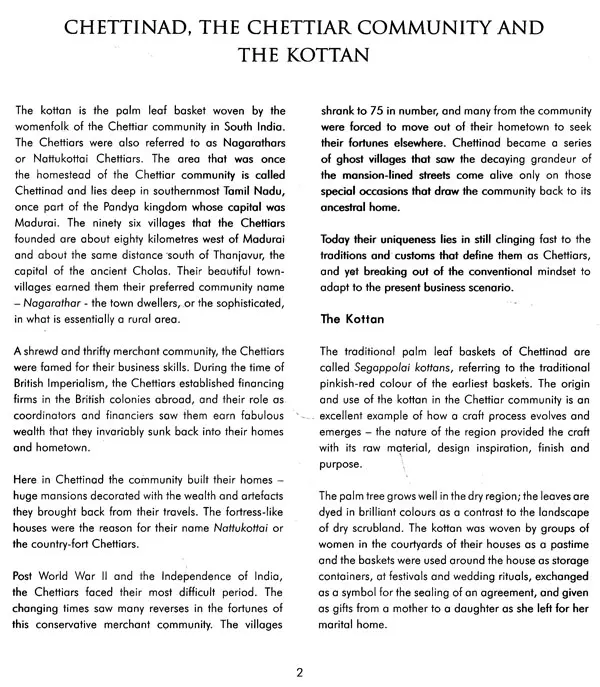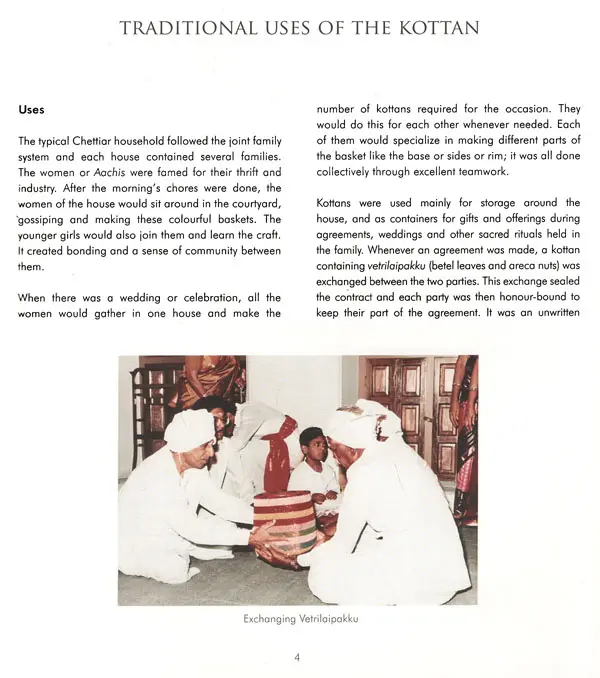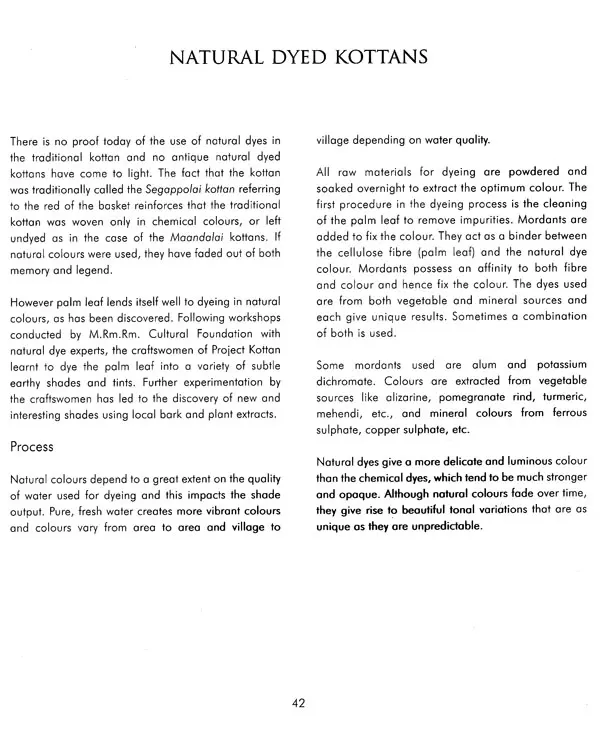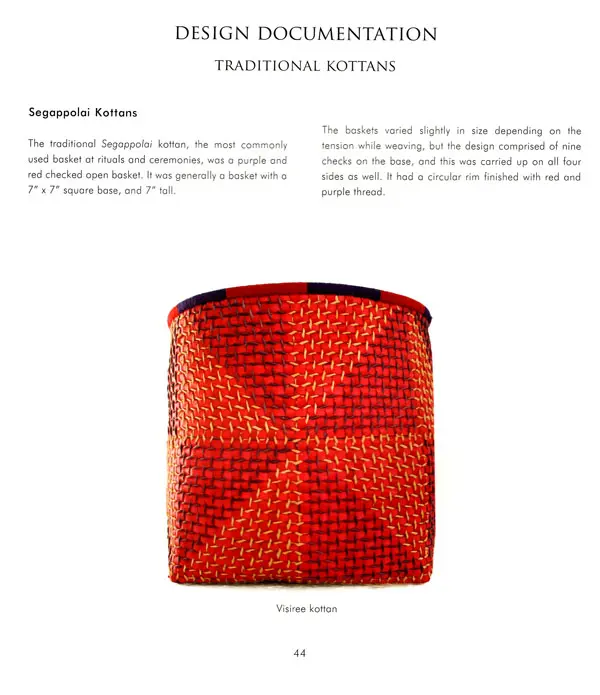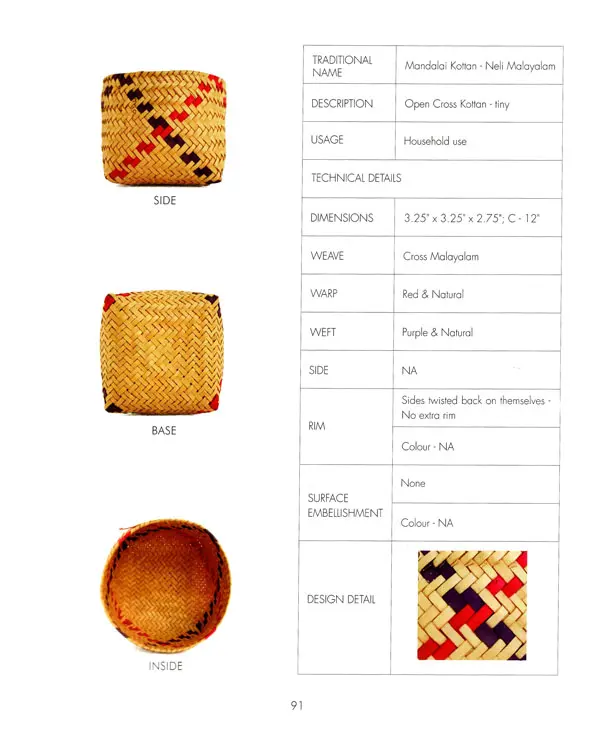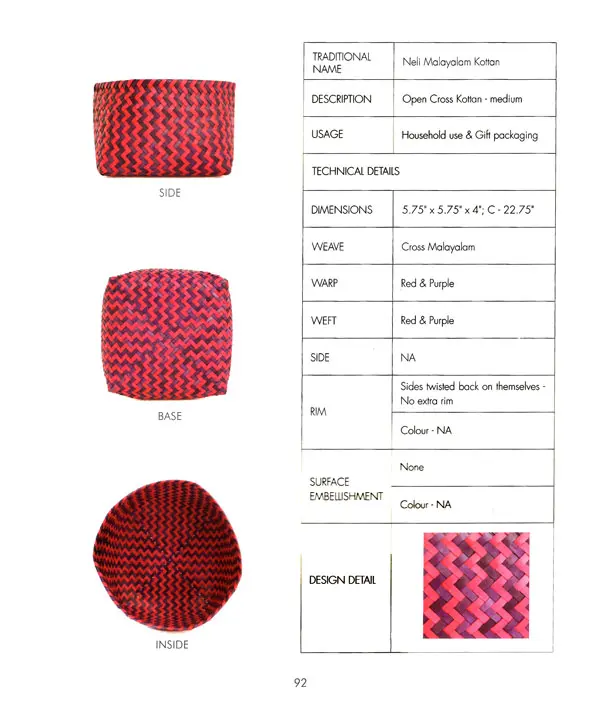
The Kottan- The Palmyra Basket of Chettinad
Book Specification
| Item Code: | UAL140 |
| Author: | Visalakshi Ramaswamy |
| Publisher: | M.Rm.Rm. Cultural Foundation,Tamilnadu |
| Language: | English |
| Edition: | 2013 |
| ISBN: | 9788192159409 |
| Pages: | 186 (Througout Color Illustrations) |
| Cover: | HARDCOVER |
| Other Details | 10.00 X 8.00 inch |
| Weight | 940 gm |
Book Description
The Kottan: The Palmyra Basket of Chettinad not only showcases the finest basket weaving tradition of the region, but also serves as an important record of the traditional techniques of kottan basketry that were languishing for decades - till Visalakshi Ramaswamy through the M.Rm.Rm. Cultural Foundation undertook the task of reviving the craft.
The book explores the journey of the beautiful Kottan from its role as a hobby craft in the Chettiar community, to its disappearance and revival. It brings out the history of the Kottan and its traditional uses, details the weaving process and materials, and includes comprehensive design documentation. The intensive revival process and the circumstances of the craftspeople of today complete the story of the Kottan. Awards, international recognition, the Geographical Indications tag and an extensive clientele now ensure that the Kottan today has found a place in the contemporary home: a happy ending to a near tragic tale.
Visalakshi Ramaswamy's vivid recollections of the Kottan in her youth enrich the narrative. The extensive documentation of designs and painstakingly illustrated techniques give the book archival status.
The book is organized into ten richly illustrated chapters, complete with accompanying text and line drawings of the basket making process, a glossary, and over five hundred colour illustrations of traditional and contemporary baskets. The book is a must-read for anyone with an interest in craft, culture and design, and will be indispensable to craftspeople, academics and designers alike.
The M.Rm.Rm. Cultural Foundation started by Visalakshi Ramaswamy in the year 2000 is a non-profit organization that supports and undertakes the documentation of, and works towards the revival of crafts, textiles and architecture that are languishing. The M.Rm.Rm Cultural Foundation's motto is 'Research, Document, Revive', with craft preservation and revival rooted in artisan and community development. It works primarily with local village women to revive craft, and at the same time provides them with a reliable source of income, exposure and a tremendous amount of confidence.
The M.Rm.Rm. Cultural Foundation organizes workshops for craft communities with craft revival, design and marketing in mind, while also helping young members of the community with their education. The Foundation also encourages, supports and sponsors students from design schools to research and document crafts and architecture, and facilitates interaction between students and local craft communities.
This record of the kottan as the traditional basket of Chettinad captures the history of the basket, what it was in earlier times and its present day condition. I have documented the designs, techniques and styles based on my collection of antique and heirloom kottans. This book is the project of the M.Rm.Rm. Cultural Foundation, a non-profit organization that I started in 2000 to research, document and revive traditional crafts that were languishing - Project Kottan was one of the first initiatives.
The Chettinad kottan is a finely woven palm leaf basket that was a hobby craft with a practical function. Traditionally called the Segappolai kottan because of its distinctive segappu or pinkish red colour, the basket served as a creative yet functional outlet to the industrious Chettiar housewife or Aachis as they were called, whose spare time was not idly wasted.
Crafts and textiles have always been an essential part of my life and I grew up with a deep appreciation for the kottan. It brings to my mind holidays and festivals in Chettinad spent playing with innumerable cousins around the courtyard where my mother and aunts sat chatting as their hands dexterously wove the kaftan. I watched how the beautiful baskets they wove were used in rituals and ceremony, and to store the areca nuts so important to every special occasion. I have also seen them used to sift and clean rice and to store the silk cotton we used to twist into lamp wicks. In a merchant community where the men of the family were Dften away for long stretches of time, this everyday meeting to weave the kottan served to bring the women together, gave them a sense of security, and overcame any feeling of isolation they might have had.
As part of tradition, my mother gifted me kottans and thadukkus (floor mats) to use in my marital home. I remember hearing my mother telling my aunt Kalyani Aachi to buy the thadukkus from Kandavarayanpatti because no one was making them in our village anymore. I understand today why thadukku weaving was not favoured in this hobby craft - the large flat base has to be woven using the feet to hold the warp in place, and the broad width of the square mat necessitates the weaver to place her feet as far apart as possible to get the required size. As a young bride, during my visits to my husband's aunt, I recollect that she frequently sat surrounded by her friends and their basketry materials, and they kept their hands busy weaving kottans even as they conversed.
**Contents and Sample Pages**
